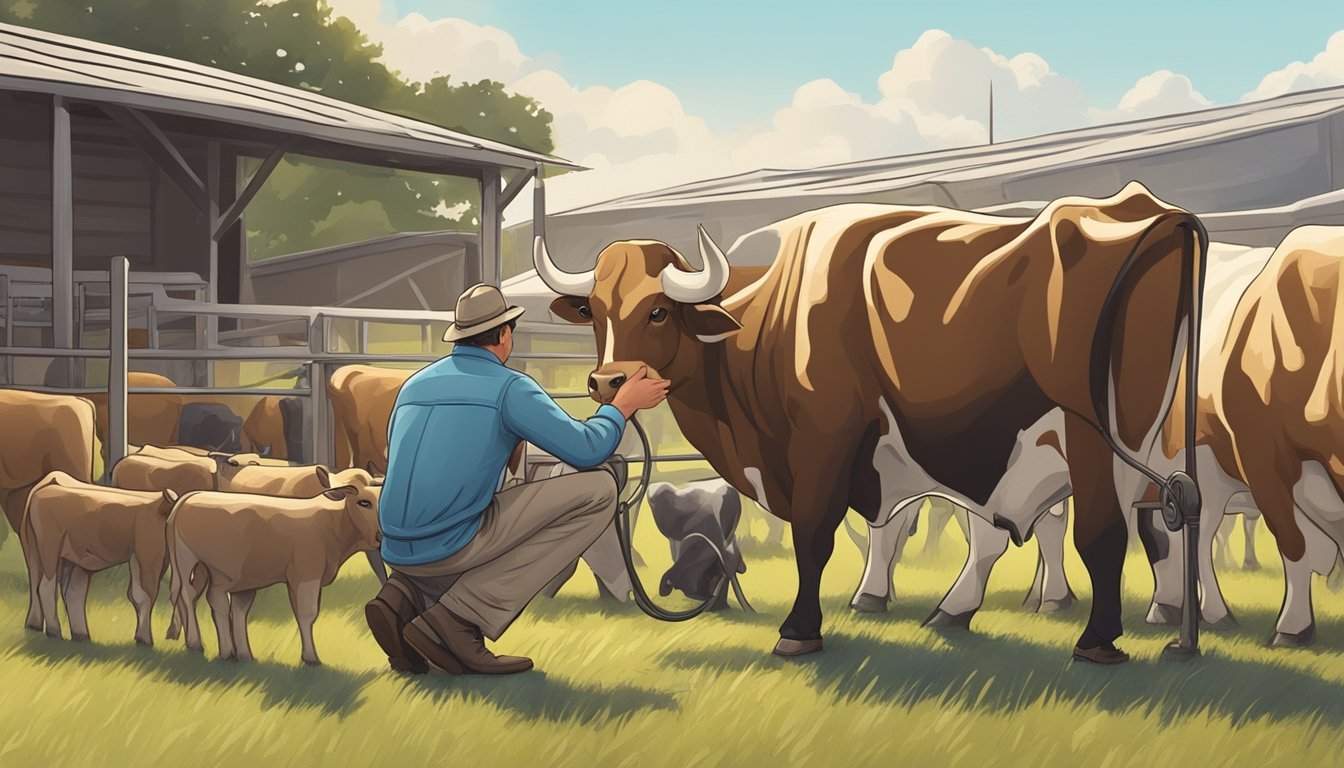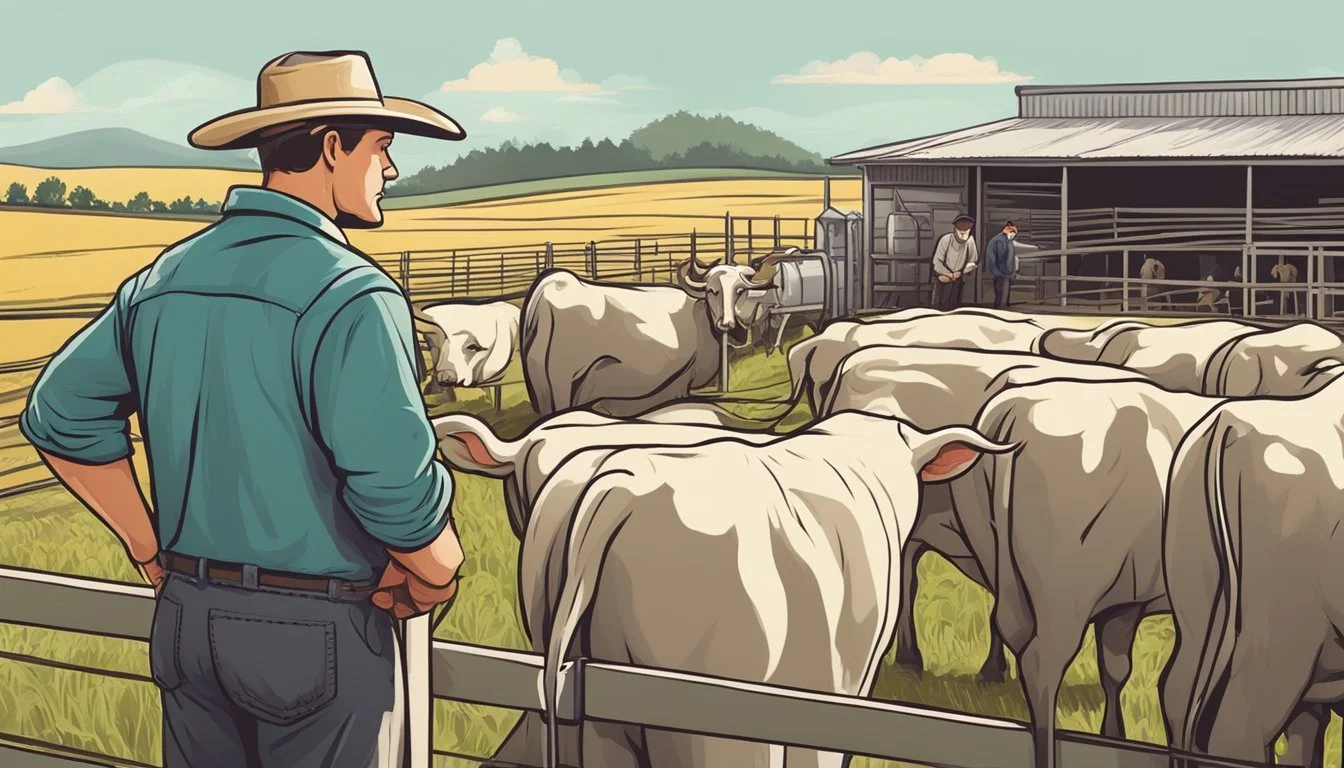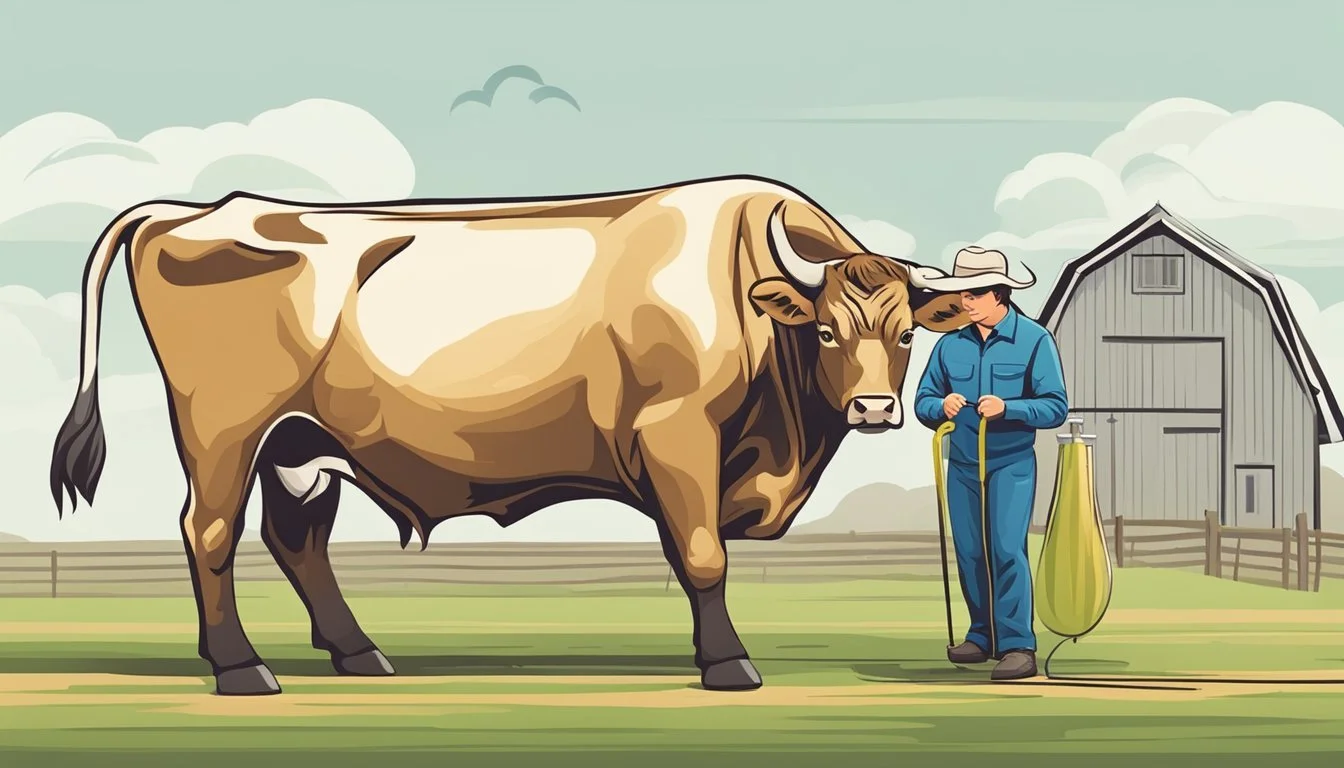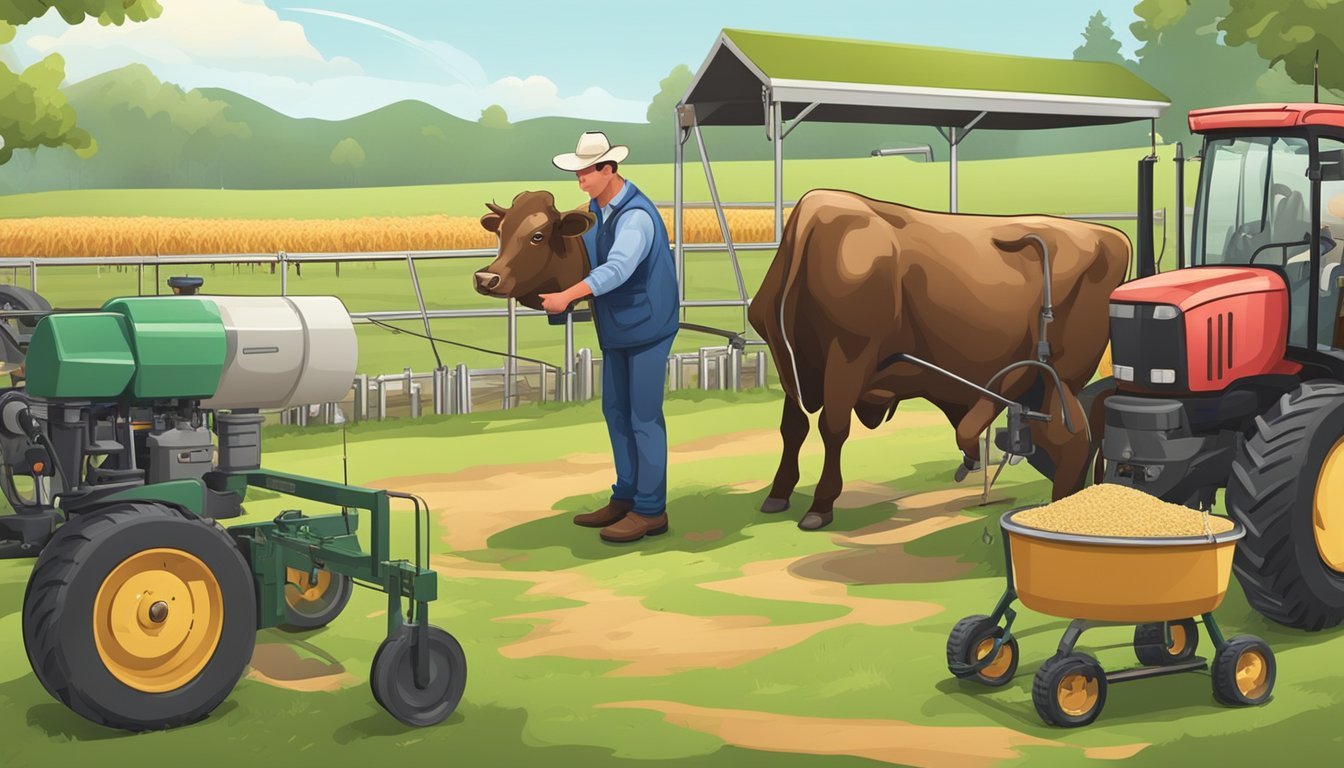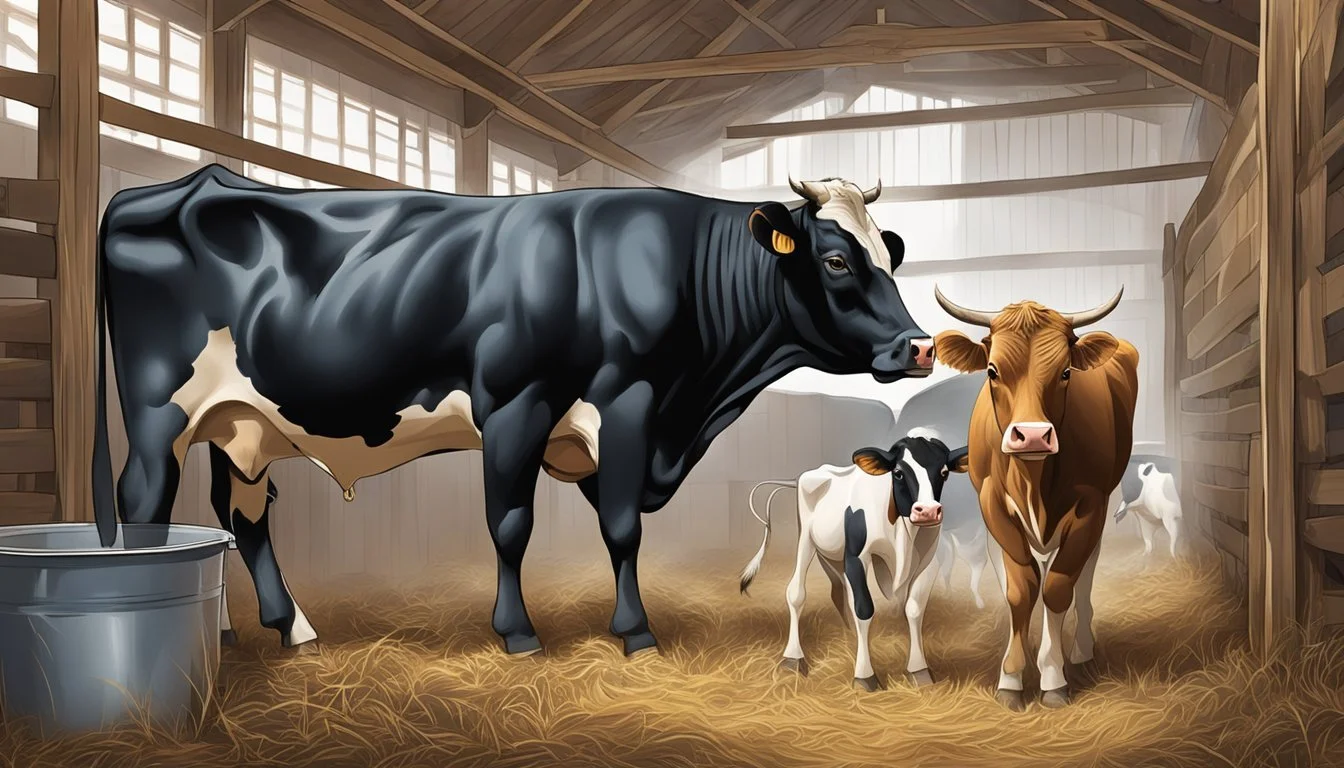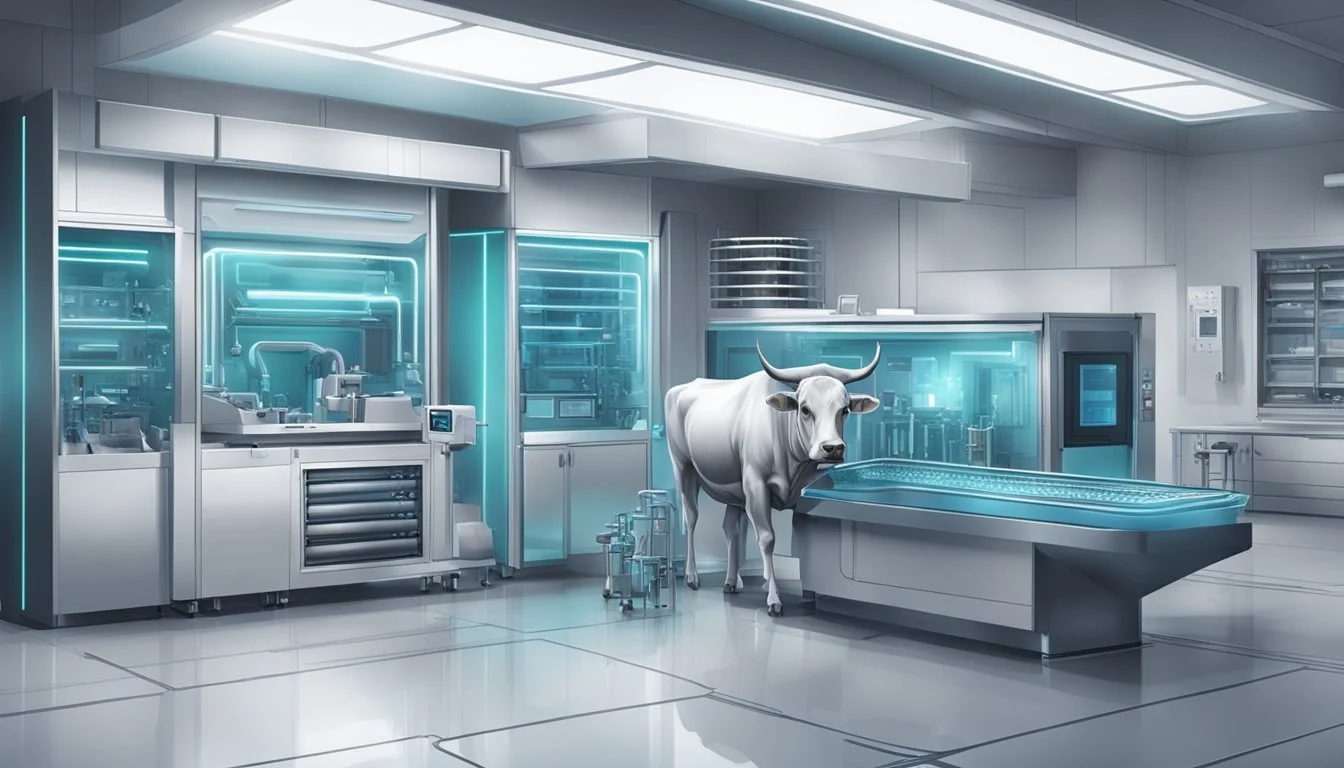Should I Use Artificial Insemination or Keep a Bull?
Weighing Your Farm's Options
Deciding between the traditional practice of bull breeding and the modern approach of artificial insemination (AI) can have significant implications for the management, genetics, and economics of a cattle operation. On one hand, AI offers the potential for rapid genetic improvement by providing access to genetically superior sires that may have been otherwise inaccessible. This method also allows greater control over breeding timing and can reduce the safety risks associated with handling a live bull. For example, artificial insemination helps reduce injuries that can occur when dealing with bulls, which despite being calm, should never be trusted.
Conversely, maintaining a bull for natural service may seem like a simpler option, especially for smaller operations. Keeping a bull can lead to higher conception rates compared to AI, which has been a determining factor for many who opt to continue with this method. There are, however, additional considerations like the bull's upkeep, the potential for disease transmission, and the genetic bottleneck that arises from using a single bull over an extended period.
Both methods have associated costs and benefits, whether it's the upfront cost of semen and the need for a skilled technician for AI or the yearly maintenance and potential risks of keeping a bull on the farm. For instance, some farmers might find AI to be more cost-effective in the long run, despite the higher initial investment. Ultimately, the decision should align with the farm's operational goals, resources, and management capabilities.
Understanding Artificial Insemination and Natural Breeding
When choosing between artificial insemination (AI) and natural service through keeping a bull, it is important to consider the procedures, merits, and implications of each method. The following subsections detail the basics of artificial insemination and the role of a bull in natural breeding.
Basics of Artificial Insemination
Artificial insemination is a process where semen is collected from a bull and then manually inserted into the female's reproductive tract. One of the primary advantages of AI is the ability to use semen from genetically superior sires, which is instrumental in enhancing the genetic quality of the herd.
Collection: Semen is obtained from a bull using specialized techniques ensuring safety and quality.
Storage: The collected semen can be cryopreserved in liquid nitrogen, allowing for extended use over time.
Insemination: A trained individual introduces the semen into the cow or heifer at the optimal time for conception.
This technique enables breeders to maximize genetic diversity and improve herd lineage without the need for maintaining a bull on-site, which can prevent potential risks of injury or disease transmission.
The Role of a Bull in Natural Service
In natural service, a bull is maintained within the herd and mates with cows during their estrous cycle. The role of the bull in natural breeding is critical as he determines the genetic contribution to the offspring and can influence the herd's genetic variability.
Breeding: A physically fit and healthy bull can service multiple females in a natural pasture setting.
Genetics: A bull's genetic traits are directly passed to calves, impacting future herd performance.
Management: Requires oversight of the bull's health and welfare, as well as the timing and success of the matings.
While natural service is simpler and does not require specialized equipment, it may introduce risks such as injury to animals during mating or the spread of venereal diseases. The bull's ability to breed can also be constrained by age or physical limitations.
Evaluating Genetics and Breeding Goals
When determining the best breeding method for livestock, understanding the genetic impact on future herds is essential. With a focus on genetic improvement, utilizing Expected Progeny Differences (EPDs), and valuing the contributing genetics of bulls, farmers can make informed decisions about the application of artificial insemination (AI) or maintaining a bull for natural breeding processes.
Genetic Improvement through AI
Artificial insemination grants access to top genetics from a diverse pool of sires. This method allows for sire selection from a global catalog, improving the genetic quality of the calf crop. Through AI, the likelihood of passing on favorable traits is increased, thus accelerating genetic improvement across the herd.
Benefits of Bull Genetics
On the other hand, keeping a bull can offer advantages, especially if the bull has high-quality genetics that complement the herd. The benefits include immediate availability and eliminating the need for the infrastructure required for AI. Bull genetics play a crucial role in breed characteristics and the overall genetic health of the progeny.
Expected Progeny Differences (EPDs)
EPDs are a critical tool for breeders; they measure the genetic potential of an animal as a parent. EPDs encompass a range of traits, from birth weight to milk production, and they provide a genetic prediction of a sire or dam's impact on their offspring. This data supports informed breeding decisions, whether through AI or natural breeding processes.
Cost Considerations
When it comes to breeding strategies, livestock owners must weigh the financial implications of artificial insemination (AI) and bull ownership. Each approach entails unique expenses that could influence the overall cost-effectiveness of cattle operations.
Investment in AI Technology and Training
Artificial insemination requires initial investments beyond purchasing semen. This includes the cost of an insemination kit, as well as a storage tank for maintaining semen at correct temperatures using liquid nitrogen. It is critical to train technicians or pay for a skilled technician's services. Furthermore, a nitrogen tank must be regularly filled, adding recurring expenses. For instance, the industry-standard temperature for semen storage is between 90 to 95 degrees, and specific protocols for thawing and handling must be followed to ensure success.
The Expense of Keeping a Bull
Alternatively, maintaining a bull for natural breeding can lead to different costs. Feeding and general care are ongoing expenses, and there must be consideration for the potential risks and costs associated with injuries—both to the bull and the cows. Additionally, the genetic diversity obtained from a single bull is limited unless new bulls are periodically acquired. Comparatively, a bull's expenses might initially seem less complex, but aspects like lower genetic diversity or additional costs due to non-predictable vet visits can quickly accumulate. The comparison of costs between AI and bull usage shown in a recent analysis may help producers to understand the nuances better.
Reproductive Management Strategies
Choosing the appropriate reproductive strategy in cattle operations is vital for promoting efficient herd management and optimizing the breeding and calving seasons. Whether it involves implementing synchronization protocols, performing timely heat detection for artificial insemination (AI), or managing the natural service breeding season, each approach requires detailed planning and precise execution.
Implementing Synchronization Protocols
Synchronization protocols allow for precise control of the estrous cycle, making it possible to arrange for timed AI. These protocols typically involve the administration of hormones such as prostaglandin and GnRH to synchronize the cycles of a group of cattle. When executed correctly, synchronization can lead to a more concentrated calving season, facilitate better management of the herd, and in some instances, improve conception rates.
Heat Detection and Timing for AI
Accurate heat detection is a critical component of successful AI programs. They can detect when a cow is in estrus and therefore when the time for insemination should occur for the highest chance of conception. Various methods exist, ranging from visual observation to more advanced technologies like heat detection aids. Once estrus is detected, the timing for AI is usually within 12 to 24 hours to coincide with ovulation, though specifics can depend on the synchronization protocols used.
Natural Service Breeding Season Management
In contrast to timed-AI, natural service relies on a bull being present with the cows during the breeding season. It requires different management strategies, such as ensuring the bull's health, virility, and ability to cover the number of cows in the herd. The duration of the breeding season should be defined to maintain a consistent calving season, which aids in management and can enhance reproductive performance overall.
Success and Performance Metrics
When deciding between artificial insemination (AI) and keeping a bull for breeding livestock, important factors to consider are the success and performance metrics, such as conception and pregnancy rates, as well as growth and production outcomes. These indicators provide critical insights into the economic value and overall improvement in herd quality.
Analyzing Conception and Pregnancy Rates
Conception rate is the percentage of inseminated females that become pregnant. AI has a notable advantage in this area, because it allows for the use of semen from highly fertile bulls, which can lead to higher conception rates.
Pregnancy rate, another vital metric, is the number of females that are pregnant out of the total number eligible for breeding. AI’s strategic timing and genetics can potentially enhance these rates.
It's critical to monitor these rates closely, as they directly impact the herd's reproductive efficiency and the economic value of the livestock operation.
Assessing Growth and Production
Growth and production are measured by the performance of the offspring in terms of both physical growth parameters and production metrics, such as milk yield or weight gain for beef.
Uniform calf crop: AI can lead to a more uniform calf crop, which simplifies management tasks and marketing of the animals.
Evaluating growth and production outcomes provides a tangible measure of the bull's genetic contribution or the effectiveness of AI. Monitoring improvements in breeding results allows one to gauge potential increases in the operation's profitability and long-term sustainability.
Health and Safety Considerations
When choosing between artificial insemination (AI) and keeping a bull, it's important to consider the health and safety implications for both the livestock and those handling the procedures. These considerations can significantly impact herd health and fertility outcomes.
Risks of Disease Transmission
Implementing AI can reduce the risk of sexually transmitted diseases in a herd, as it eliminates the direct contact between animals that is inherent in natural breeding processes. This practice allows for better control over the genetic material, ensuring that semen from tested and disease-free bulls is used. On the other hand, keeping a bull can increase the risk of disease transmission among livestock, as bulls may carry and spread infections during mating.
AI: Reduced disease transmission via use of disease-free semen.
Live Bull: Increased risk of sexually transmitted diseases due to animal contact.
Handling Bulls and AI Equipment Safely
Handling a live bull requires strict safety protocols due to their size and strength, which can pose risks to farm workers. AI, however, presents different safety challenges. The AI process must be carried out using clean, non-spermicidal lubricant to maintain fertility rates and ensure the health of both the semen and the livestock.
AI equipment handling:
Use of clean, non-spermicidal lubricant to avoid affecting sperm viability.
Proper storage and handling of semen to maintain its quality.
Bull handling considerations:
Implementation of safety measures to protect staff from injuries.
Regular health checks to maintain herd health and preserve a safe breeding environment.
Implementing A Successful AI Program
When it comes to artificial insemination (AI) in cattle, attention to detail is paramount. The key factors for a successful AI program include the choice of quality semen, the mastery of AI techniques, and maintaining a strong relationship with veterinary professionals.
Selecting the Right Semen and AI Technique
Choosing the right semen is crucial for achieving desired genetic traits and herd improvements. Producers typically select between frozen semen and sexed semen, with the latter being used to predetermine the sex of the offspring. Proper semen handling is vital; it must be stored in a thaw unit and handled with care to maintain viability. During insemination, the AI gun, often a stainless-steel version for durability and ease of sanitation, must be used along with a straw cutter and thermometer to ensure semen is thawed and delivered effectively.
Working with Veterinarians and AI Technicians
A successful AI program relies heavily on the expertise of both veterinarians (DVM) and AI technicians. Veterinarians are crucial for conducting reproductive health checks, while skilled AI technicians ensure that the insemination technique is performed with precision. Regular training and updated knowledge about the best AI practices contribute significantly to the program's success.
Decision-Making for First-Calf Heifers
First-calf heifers are often the most challenging category for AI, requiring specific timing and handling. Decisions regarding their insemination should be meticulously planned and timed to ensure both a high conception rate and their long-term health and productivity. In particular, these heifers should be in optimal body condition and stress levels should be minimized during the AI process.
Utilizing Cleanup Bulls Effectively
In some instances, a cleanup bull might be necessary if AI does not result in pregnancy. When integrating cleanup bulls into the AI program, their health status, fertility, and genetics should be closely evaluated to continue the move toward herd improvement. Cleanup bulls can ensure that the breeding cycle is completed, and that there are no lapses in the herd's productivity.
By taking into account these detailed aspects, cattle producers can implement an AI program with confidence, knowing that each step has been carefully considered to positively impact the herd's future.
Livestock and Farm Management
When considering artificial insemination versus maintaining a bull for breeding, farm managers must ensure that the nutritional and environmental conditions support the reproductive health of livestock. Proper nutrition and pasture management are crucial for high fertility rates, whether using artificial insemination or natural service from a bull.
Nutritional Requirements for Reproductive Health
Livestock must receive a diet that meets their nutritional requirements to maintain a healthy reproductive system. For cows to effectively ovulate and display clear signs of heat, they need balanced levels of energy, protein, and essential minerals. Specifically, diets should be fortified with vitamin E and selenium, which can improve reproductive performance. An extension agent or livestock nutritionist can offer guidance on formulating rations that optimize breeding cows' chances of becoming pregnant and expressing maternal traits.
Vitamin E: Vital for preventing oxidative damage to reproductive tissues.
Selenium: Essential for thyroid hormone metabolism affecting heat cycles.
Managing Pasture for Bull and Cow Health
Sustainable pasture management plays a significant role in maintaining the health of both bulls and cows. Ensuring that grazing lands are not overstocked and contain a variety of forages can promote optimal weight and body condition, which is essential for successful breeding and carcass traits in offspring. It's important to rotate pastures to control parasites and provide consistent nutrient content in forage, which supports overall livestock health.
Create a pasture rotation schedule to prevent overgrazing.
Monitor for adequate forage availability to meet the herd's protein needs.
Through diligent attention to these management aspects, livestock producers can support the health and productivity of their breeding herds, whether they choose to utilize artificial insemination or maintain a resident bull.
The Future of Breeding Techniques
Advancements in artificial insemination (AI) and breeding technologies promise significant strides in genetic improvement for cattle. Tiered to align with these developments are research efforts honing in on targeted phenotypic traits.
Innovations in AI and Breeding Research
Research in AI has made it possible to amplify genetic progress through precision breeding practices. For instance, new sperm sexing technologies are being refined to allow producers to choose the sex of the offspring, thereby enhancing the herds with desirable traits more rapidly. These scientific enhancements are particularly relevant for beef cattle breeds such as Angus, Simmental, and Hereford, where both meat quality and reproductive efficiency are critical. Researchers continue to develop more accurate GenEx evaluation methods that help predict the genetic merit and potential of an animal much earlier in its life.
Rising Trends in Cattle Genetics
The integration of advanced genetic tools is reshaping cattle breeding strategies. There's a clear shift towards more sophisticated use of genetic information, marked by the emergence of genomic testing in registered herds. This increased precision not only helps predict phenotypes but also ensures the consistency of traits passed to offspring. Extension services play an integral role in transferring these cutting-edge technologies to the field, guiding farmers on how to integrate these methods into existing breeding programs for optimal results. Genetic improvement continues to be a driving force behind cattle breeding, ensuring that Angus, Simmental, and Hereford breeds meet the evolving demands of the market.

